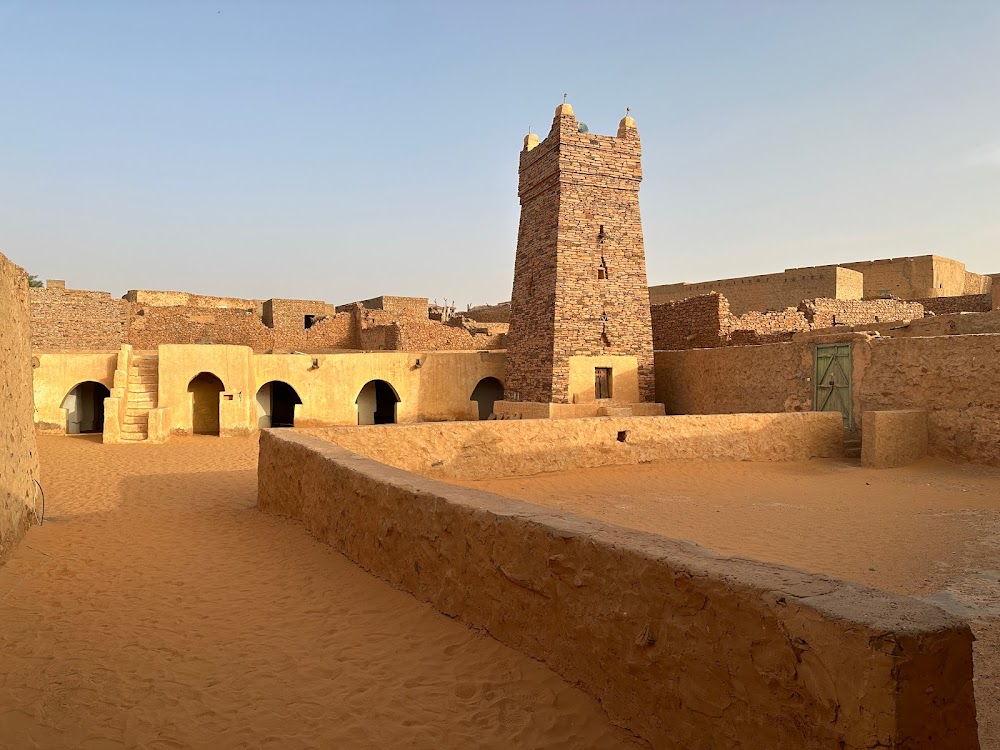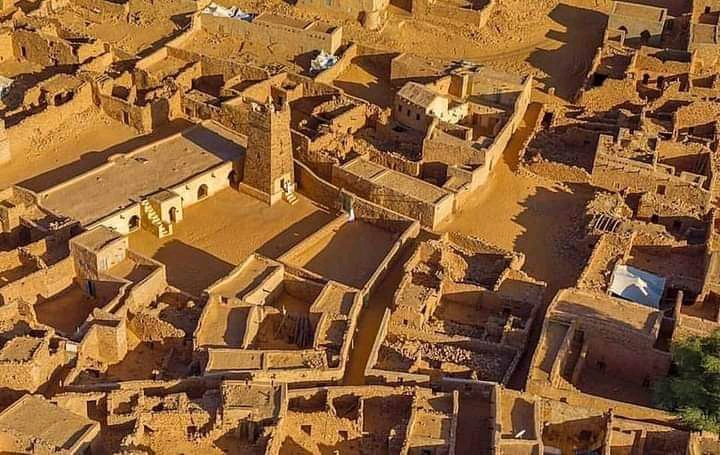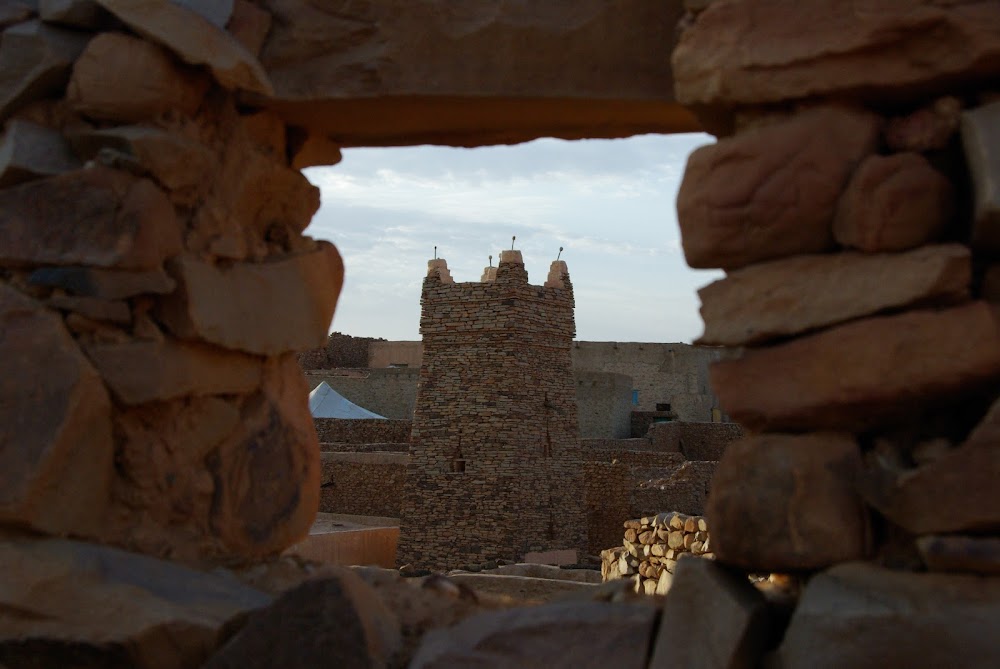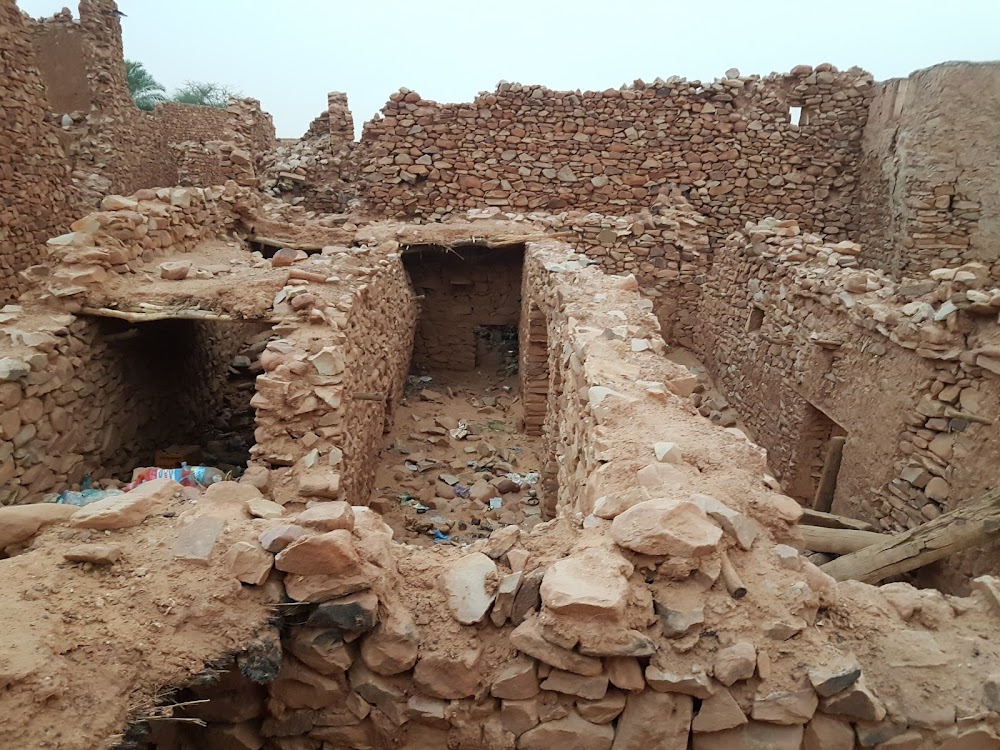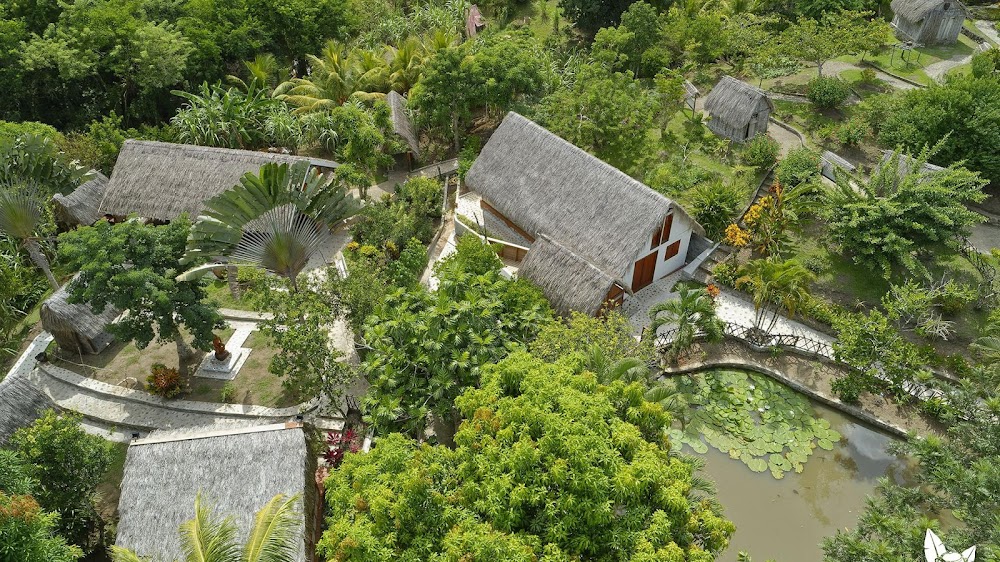Chinguetti Mosque (مسجد شنقيط)
Overview
The Chinguetti Mosque, nestled in the ancient city of Chinguetti in Mauritania, is a remarkable testament to the region's rich history and architectural mastery. Established in the 13th century, Chinguetti emerged as a prominent center of trade, scholarship, and Islamic culture within the Sahara Desert. The mosque, built concurrently with the city, embodies the fusion of spirituality, education, and community that has long characterized this historic locale.
What makes the Chinguetti Mosque truly captivating is its simple yet striking design. Constructed using traditional materials sourced from the harsh desert environment, the mosque showcases the resourcefulness of its builders. Thick walls made from local stone and mud provide both durability and insulation against extreme temperatures, ensuring a cooler interior during the sweltering heat of the day. The roofing sections, crafted from timber sourced from nearby oases, further highlight the ingenuity of the construction.
As you approach the mosque, the first feature that catches your eye is its imposing minaret, renowned as the second oldest continuously used minaret in the Muslim world. This unique square structure, built from stone and crowned with a series of battlements, resembles ancient fortifications. Not only does the minaret serve its religious purpose by calling the faithful to prayer, but it also acts as a lookout point and a prominent landmark in the vast desert landscape.
The interior of the mosque is thoughtfully designed to accommodate the spiritual needs of the local community. The prayer hall, while modest in size, can hold several dozen worshippers at a time. Timber beams support the roof, which features small apertures that allow just the right amount of light to filter through, creating an atmosphere conducive to reflection and prayer. The floors are traditionally covered with simple mats, where worshippers kneel and bow during their prayers.
Adjacent to the mosque, a madrasa forms a vital part of the complex, underscoring Chinguetti's role as a center of Islamic learning. This educational institution has played a crucial part in training scholars who would traverse the region, spreading knowledge and facilitating trade along the Trans-Saharan routes. Here, texts on theology, astronomy, mathematics, and law were meticulously studied, attracting scholars from as far away as Andalusia and the Maghreb, which enriched the intellectual atmosphere of the city.
The architectural resilience of the Chinguetti Mosque has allowed it to endure centuries of harsh climatic conditions, standing as a beacon of culture and history. Its thick stone walls have withstood the test of time, and ongoing local restoration efforts have helped maintain both its structural integrity and aesthetic beauty. The community remains dedicated to preserving their heritage, sharing the responsibility of maintenance to ensure that the mosque continues to fulfill its purpose.
Recognized as a World Heritage Site by UNESCO, Chinguetti and its mosque have garnered increased awareness and support for preservation efforts. Collaborative projects involving international conservation groups and local artisans aim to utilize traditional building techniques while incorporating modern methods to ensure the site's longevity and authenticity.
In essence, the Chinguetti Mosque is much more than an ancient structure; it is the heart of a resilient community deeply connected to its storied past. Its ongoing use as a place of worship and learning exemplifies the harmonious coexistence of history, culture, and faith, inspiring future generations. The mosque stands not only as a relic of the past but as a living symbol of the enduring spirit of Chinguetti.


